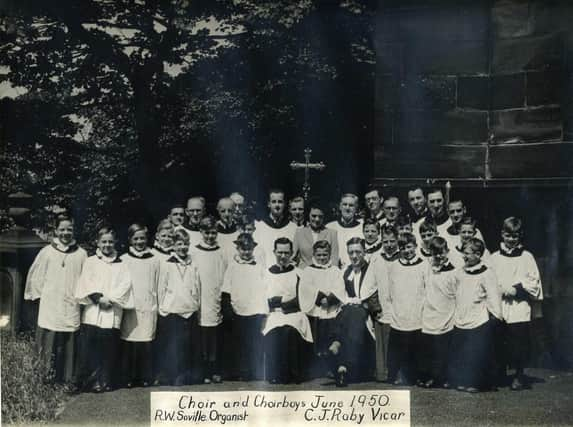Nostalgia with Margaret Watson: 200th anniversary of St John’s Church – join them to celebrate


Margaret Watson writes: Our forebears kept holy the Sabbath in the only way they knew how, on their knees in a church they had helped build.
Sadly, many of these hallowed places have closed, and some have been demolished, never to be replaced, like those who built them.
Fortunately, some of them are still with us, but most of us walk past them every day and don’t give them a second glance.
Perhaps if they knew of the rich history of some of these churches and the good work its members are doing, they might go inside.
One church I am particularly wanting to mention this week is St John’s Church, Dewsbury Moor, which this year celebrates its 200th anniversary.
They are planning to put on a number of events, especially in early May and will be inviting people to join them and learn more of the church’s history.
This particular church has a special place in my heart because it was one of the first Anglican churches I got to know well when I first started training to be a reporter in 1958.
I was given the district of Dewsbury Moor to cover when the Vicar of St John’s was the Reverend P M Berry, who like me, was new to the job, his old one having been as chaplain at Borstal.
It was a busy church with lots going on and Mr Berry was always happy to give me all the church news and always had time to talk to me.
Tragically, he died four years later at the age of 45, and sad to say, I never knew his Christian name.
In those days the clergy were rarely on first name terms with their flock as they are today.
Two other ministers I knew only by their initials were the Reverend E C Henderson, of Dewsbury Parish Church, and the Reverend E H Tue, of Savile Town Methodist Church.
St John‘s church was one of the “million” churches, so called because it was built in the period when Parliament made a grant of £1m for the building of churches in populous districts like Dewsbury. Can you imagine them doing that today?
These churches were built during a period of rapidly expanding population, partly as a result of the Industrial Revolution when agricultural workers were leaving the country to find work in the towns.
In 1827 when St John’s was built, conditions of work for many, especially those working in pits and mills, were appalling.
Children as young as four were employed to work in the mines, where they could spend as long as 12 hours a day in the dark, unless a kindly miner gave them a candle.
In the winter these children never saw the daylight except on Sunday, and the only other days they had off throughout the year was Good Friday and Christmas Day.
One eight-year-old boy, who worked as a “trapper” 13 hours a day, told a Government Inquiry: “Sometimes when I have a light, I sing, but not in the dark. I dare not sing then.”
But it would be six years before the Factory Act came into being which forbad children under 13 to work more than eight hours a day.
No wonder streets in the area were named after those men who fought for these changes, namely Oastler Street, Reform Street and Russell Street.
It was against this dark, depressing background that St John’s Church was built, and there were many fine people who set about making it a church that would last.
If you look at the names of the men who were instrumental in it being built, you will not be surprised to find why they decided to call it by that name. For they too were all called John.
The man who gave the land on which it was built, was John Hague, the legal conveyance was made by John Halliley, the patron was the Reverend John Buckworth, the first priest was the Reverend John Payne, the first wardens were John Tweedale and John Ellis, the first sidesman was John Heald, the clerk was John Smith, the sexton, John Ward and the head chorister, John Wormald.
Quite remarkable don’t you think?.
When the Reverend John Buckworth Vicar of Dewsbury Parish Church preached on the day the church was consecrated, he said: “O, that God may indeed render the Church instrumental in the spiritual welfare of the inhabitants through many generations.”
I think he would be pleased to know that this was exactly what happened, and is still happening 200 years later.
At a time when a number of local churches have closed in recent years, it is heartening to know that St John’s is still going and determined to stay put.
They are a welcoming church with strong ties to the local community and as part of their 200th anniversary celebrations will be holding a number of community events.
One event is a Festival of Talent to be held over the weekend of April 29 and May 1, of which I will be giving more information in next week’s column.
The event will also include information on the Heritage of St John’s and historic documents will be available for visitors to look through.
Please call in on these days between 11am and 3pm, and also take a look at some of the historic artefacts, including the magnificent stained glass windows.
Visitors will also be able to learn more about some of the famous people who once worshipped there, and who are buried in the churchyard.
More about that in future columns.